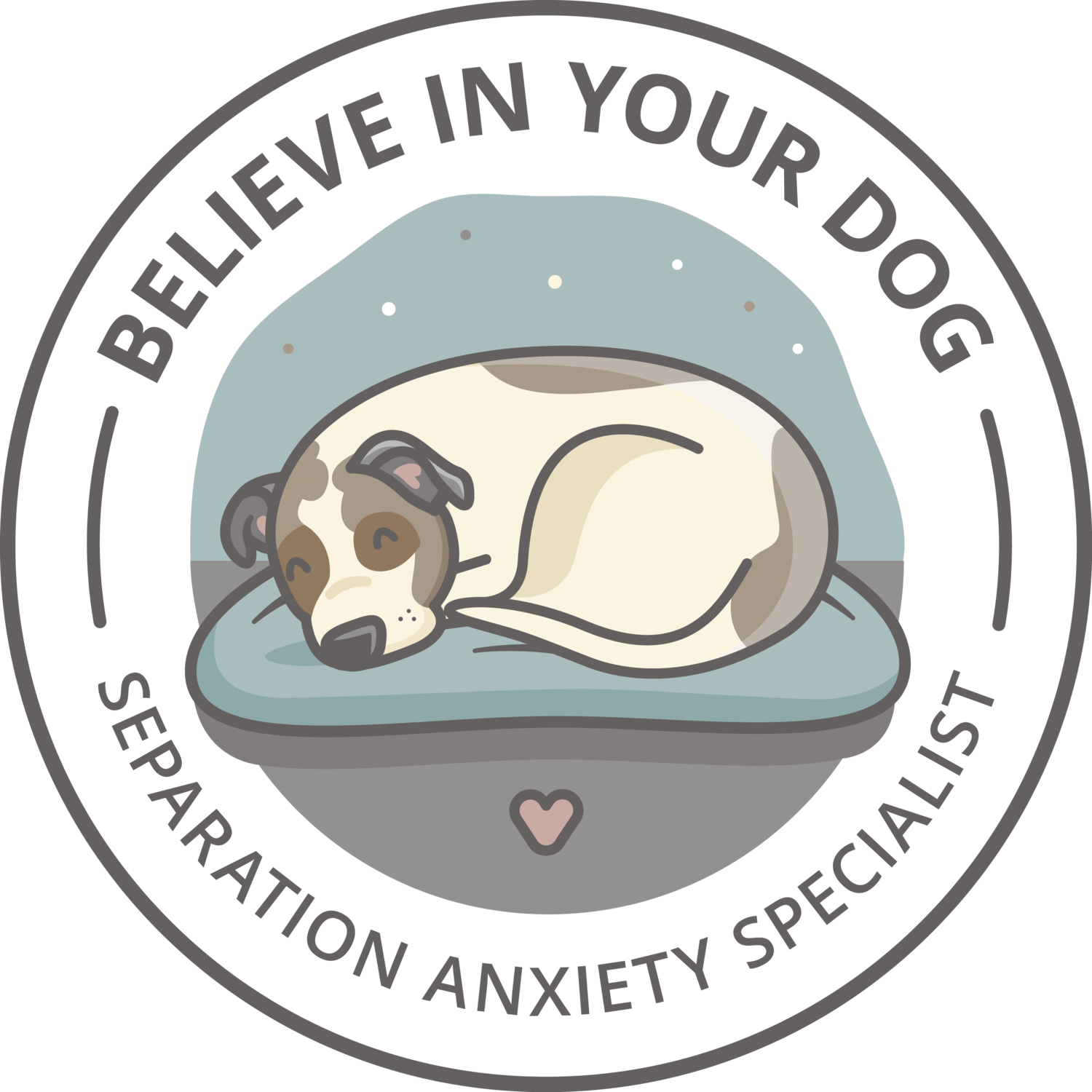Understanding Thresholds in Separation Anxiety Training: A Beginner’s Guide
Let’s talk about thresholds. If your dog is struggling with separation anxiety, your understanding of thresholds is absolutely paramount. It’s the baseline of knowledge you’ll need to create true, lasting behavior change. It’s the foundation upon which a separation anxiety training plan is built. Without it, we’re spinning our wheels and potentially making our dogs worse.
So let’s get up to speed, shall we?
Defining Thresholds
You may have been told that you need to work your dog under threshold. But what exactly does that mean? In professional dog training, thresholds to refer to the varying levels of intensity of a dog’s emotional state. These levels are of course defined by us, and they’re (hopefully) associated with specific body language cues and behaviors that give us insight into how a dog is feeling. We use these categories to set boundaries around what is and isn’t acceptable during training. One of my mentors, Jean Donaldson, defines being under threshold as:
An intensity of stimulus that elicits no fear, not ‘mild fear’ or ‘manageable fear’. It’s NO fear.
Below is a graphic I released yesterday that boils down how I define 3 different threshold levels.
Levels 1 and 3 are usually pretty clear; everyone knows the difference between a dog who is perfectly content and one who is howling in distress. It’s the middle one that gets a little tricky for some to clearly identify because the cues are more subtle. But that doesn’t mean that it’s necessarily any less traumatizing for the dog; dogs just express their panic in different ways. That’s why my clients only work their dogs at Threshold 1: when their dog is perfectly fine.
We have to draw a line in the sand and make a promise to our dogs that we will never let them feel that same panic again.
There should be no fear. Zero. Zilch. Nada.
Remember the subtle signs of fear I mentioned above that can be tricky to identify? These are things like panting, lip licking, tucking ears back, pacing, and hyper-vigilance. If your dog is exhibiting any of these signs during an absence, you’ve pushed too far. Immediately abort the mission. I’ve seen seasoned dog pros miss these signs so don’t beat yourself up if you have too. Just vow to get really good at noticing them. Check out this free course to help improve your body language literacy.
Separation anxiety isn’t a quick fix. It isn’t like training sits and downs; it takes as long as it takes. For this reason alone, we never want to do anything that would slow progress. And pushing your dog to the point of fear (even if it’s mild fear) runs the risk of just that.
And a quick note about the fear signals I mentioned above: They have to be considered in context. A yawn, for example, might simply mean that the dog is tired. A lip lick might be a response to something the dog heard outside; it might also be nothing! As I mentioned, it can get tricky to suss out what exactly is going on when we’re in this threshold. That’s why the help of a professional with experience in separation anxiety is invaluable.
But my dog freaks out when I start getting ready to leave!
I know, I know. This all seems even more impossible when you have a dog who starts to get upset when you put on your shoes or reach for your keys. It feels like there’s no place to start. I’ve been through this with countless clients who feel the same way you do and I can promise you this: There is always some version of the goal that your dog can do without freaking out.
To figure out what that is, we deconstruct absences by breaking them down into smaller, less intense increments. For some dogs, that might mean that we simply start by cracking open the front door. Or maybe we just jiggle the door knob. Or maybe we simply reach for the door. There is always a place to start that keeps your dog at the right threshold. It can be tricky to find it at times, so I encourage you to reach out to me for a consultation to establish your dog’s baseline.
Final thoughts
So remember, we’re aiming for zero fear or upset. We build from there, only increasing intensity if the dog is still perfectly fine. I think this can be confusing to us humans, who are sometimes able to overcome our fears by simply confronting them. Stress is not always a bad thing, right?
The difference is that we humans understand that the stress of starting a new job, for example, is finite. It can be terrifying, but we know that it will become less scary over time. We also feel motivated by the fact it is aligned with our goals and personal growth. And our dogs, as clever as they might be, just aren’t capable of the same level of reasoning.
So let’s make a deal with our dogs: We will teach them that alone time is safe by creating an environment of safety.



